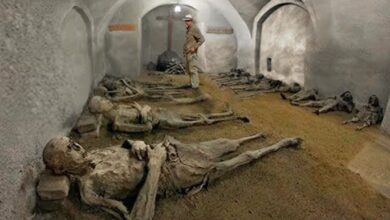New Mysterious Human Species JUST Discovered and It Changes Everything

Tells the story of a newly discovered ancestral human species, *Homo juluis*, an ancient human found through a global collaborative effort by researchers. This discovery has the potential to completely change what we think about human history.
Around 300,000 years ago, Earth was a harsh and challenging place, especially in Asia, where climates fluctuated and ecosystems changed. Animals such as deer, wild horses, mammoths, and large carnivores such as tigers lived, while many ancient human species were also spreading across the globe. In Europe, Neanderthals lived, and in Africa, our direct ancestors, *Homo sapiens*, were just beginning to form. The story of ancient humans in Asia remains shrouded in mystery, apart from *Homo erectus* and *Denisovans* – a group of ancient humans known mainly from DNA from a few fossils.
Professor Christopher J Bay and his team from the University of Hawaii have been delving into fossils in Asia for 30 years and have discovered *Homo juluis*, a new species of ancient human. These fossils, including jawbones and teeth, were initially misclassified as *Homo erectus* or archaic humans, but upon closer examination, scientists noticed distinct features that did not match the known species. In particular, their jawbones were lighter than those of *Homo erectus*, and their teeth were more similar to those of *Denisovans*, even though the fossils were found further away from where the *Denisovans* were discovered.

Scientists believe that *Homo juluis* lived between 300,000 and 50,000 years ago, and were hunters of wild animals such as horses, and used stone tools to make weapons and cutting tools, which suggests that they had the skills to make and use tools.
However, unlike *Homo sapiens*, *Homo juluis* was able to live in small groups to adapt to the harsh landscape of East Asia, where resources could be scarce and competition with large carnivores or even other human species was fierce.
Around 50,000 years ago, *Homo juluis* disappeared, and scientists have not yet determined the exact reason, possibly due to competition with other human species such as *Homo sapiens* or climate changes that made their habitat no longer suitable.
What is special about this discovery is that it helps us better understand the relationships between ancient human species and the relationship between *Homo juluis* and *Denisovans*. If there is a connection, it is possible that *Homo juluis* was a subgroup of *Denisovans*, or perhaps a close relative of them.
This changes the way we think about human development, suggesting that human evolution was not a linear path but a complex network where ancient human species interacted, migrated and adapted to their surroundings. Such discoveries show that there is still a lot we do not know about our ancient ancestors, and the journey of discovery continues.








